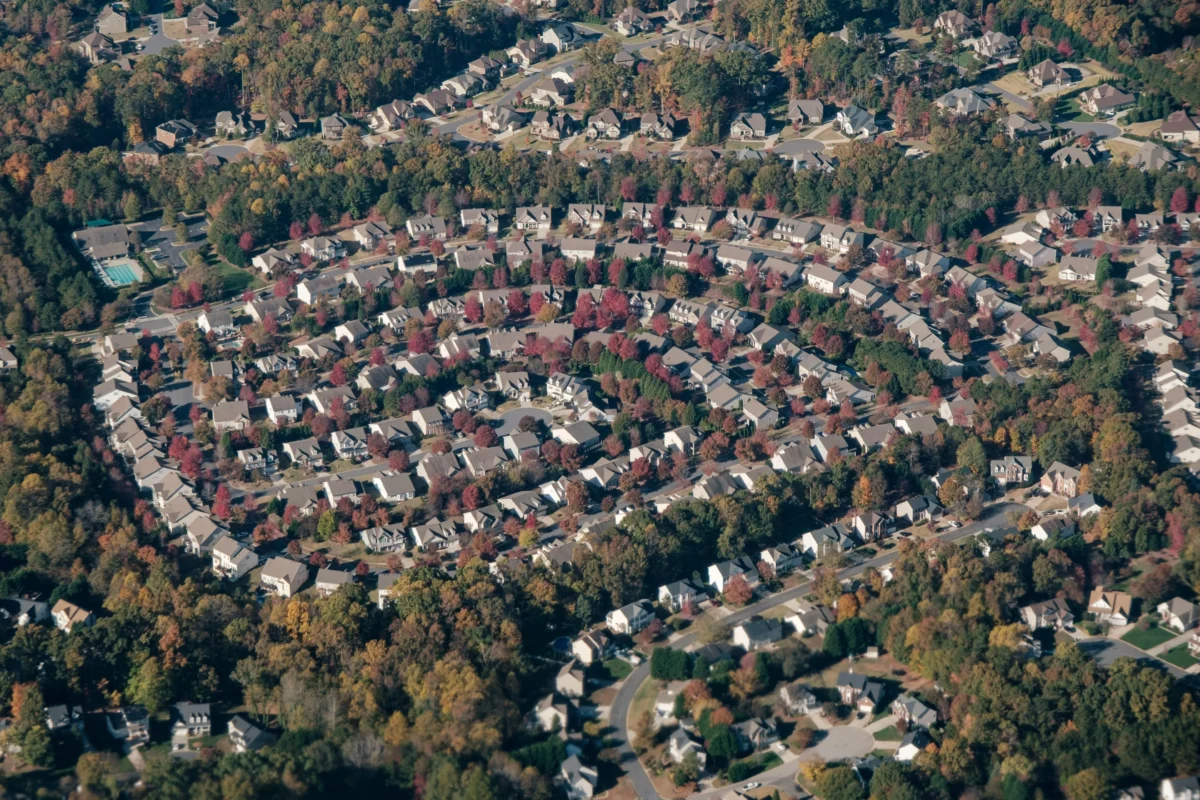
HOA Detective™ | August 15, 2025: Ezra Klein’s new book, Abundance, offers a timely framework for understanding one of the most intractable problems in American public policy: the shift from a politics of scarcity — where policy is built around defending a fixed pie — to a politics of abundance, where the focus is on expanding capacity so that everyone can have more. Klein’s book zeros in on the bottlenecks that are choking the housing supply, clean energy deployment, and infrastructure projects across the country.
Oregon SB 100 – Strangling Housing Supply: Oregon’s landmark 1973 legislation known as SB 100 was a launch pad that gave rise to the Planning Industrial Complex (PIC) previously introduced to readers in this August 1st post:
As Klein describes it, our political systems are loaded with veto points, regulatory bottlenecks, and procedural chokeholds. In theory, these structures exist to protect the public interest. In practice, they too often serve to lock in scarcity, drive up costs, and make big projects either impossibly slow or financially unfeasible.
Nowhere is this dynamic more evident than in Oregon — a state whose groundbreaking 1970s land use legislation and local permitting bureaucracy together form a near-perfect case study in how scarcity politics defeats abundance politics.
The Urban Growth Boundary: In 1973, Oregon lawmakers passed Senate Bill 100, creating the nation’s first statewide land use planning system. Central to this system is the Urban Growth Boundary (UGB), a hard line drawn around each metropolitan area to contain sprawl, preserve farmland, and focus development inward. The UGB is overseen by the Land Conservation and Development Commission (LCDC) and, in the Portland metro area, administered by the Metro Regional Government, a regional government with its own political dynamics, encompassing parts of the three largest counties in the state by population.
Noble Intentions Gone Awry: The stated goal in 1973 was to protect the state’s agricultural heritage and channel growth where infrastructure already existed. For decades, Oregon has been hailed as a national model of smart growth. But the reality, fifty years on, is that the UGB has become a scarcity machine. Expansion of the UGB is politically contentious, legally fraught, and glacially slow, especially in the most populated areas of the state where the economic stakes are the highest. The result? A fixed supply of developable land inside the UGB, even as population and housing demand have surged.
Lesson to be Learned from SB 100: Noble intentions are great, but you can’t limit the ability to build new housing without closing the door on population growth. Period! Not unless restricting the supply of the most important economic resource (housing) in modern society is your end goal.
Scarcity Outcomes: From Vision to Constraint: When you lock land supply inside a legal boundary and make expanding that boundary a costly, years-long battle, basic economics kicks in: the price of land inside the UGB rises, often dramatically. Developers compete for scarce parcels, bidding up costs before a single foundation is poured. Higher land prices cascade into higher housing costs, whether single-family homes or multifamily projects.
Klein’s abundance framework would see this as a failure to adjust capacity to meet demand. The UGB was never intended to be a static barrier, but political incentives now reward defending it, not adapting it. Meanwhile, those most in need of affordable housing are priced out, and middle-income buyers face bidding wars that would have been unthinkable in the 1970s.
BECAUSE YOU’RE BUYING MORE THAN A HOME! ™
Enter the Permit Industrial Complex: The UGB is just the first hurdle. Once a project site is secured inside the UGB, developers must navigate an increasingly complex web of local permitting processes — what The HOA Detective™ calls the Permit Industrial Complex (PIC).
The PIC is an ecosystem of overlapping regulatory requirements, environmental reviews, traffic studies, design reviews, public hearings, appeals, and often, litigation. Each step may be defensible in isolation, but together they form a gantlet that can take years to run. The longer the process, the higher the carrying costs, the greater the uncertainty, and the more expensive the final product.
Far from being a neutral referee, the PIC has its own economy: consultants, lawyers, and specialists who make their living guiding clients through the PIC maze. These professionals have little incentive to see that maze simplified. Like the lawyer who benefits from overly completed laws and legislation, the experts within the PIC ecosystem have little incentive to change the system.
How the PIC Reinforces Scarcity: In an abundance-oriented governance model, permitting would be streamlined for projects that meet clear, pre-approved criteria — particularly those that address urgent public needs like housing or renewable energy. Instead, the PIC weaponizes process, enabling small, organized groups to delay or kill projects entirely.
In this video Klein, noted the irony that environmental laws are now used to block environmental projects. In Oregon, the same holds true for housing: affordability initiatives can be tied up for years under the guise of neighborhood character preservation, traffic impact mitigation, or environmental sensitivity — even when the underlying site is already zoned for development.
The Triple-Layer Scarcity Machine: Taken together, Oregon’s land use framework and the PIC form what could be called the Triple-Layer Scarcity Machine:
1. Macro-Level: Statewide land use law fixes the geographic supply of developable land.
2. Meso-Level: Regional planning bodies add another layer of politics and procedural hurdles.
3. Micro-Level: Local permitting bureaucracy grinds projects through a time-consuming, consultant-heavy process.
The result is a system where scarcity is not accidental — it’s built in at every stage. Each layer reinforces the other, making large-scale capacity expansion a political and financial uphill battle.
Applying Klein’s Abundance Politics: Klein’s central thesis — that abundance requires not just resources and technology but the capacity to act — is directly relevant here. Oregon has land, capital, and building technology. What it lacks is the governance flexibility to deploy those resources quickly and effectively. The result in Oregon’s largest cities is a growing percentage of the population who can barely afford housing, whether rented or own.
Reforming the System: An abundance-oriented reform agenda might include:
- Pre-approving certain housing types and locations to bypass lengthy reviews.
- Setting statutory deadlines for UGB expansion decisions.
- Creating one-stop permitting offices with binding timelines.
- Limiting appeals to cases with clear, demonstrable harm.
Such changes would not dismantle Oregon’s land use protections but would reorient the system toward meeting today’s housing and infrastructure needs.
Conclusion: Oregon’s land use system was a visionary achievement in the 1970s. But as Klein’s abundance framework makes clear, visions can ossify into obstacles if they fail to adapt. The UGB/PIC combination has created a multi-tiered scarcity apparatus that serves consultants and political interests more than it serves the public. If the politics of scarcity keep rewarding leaders for defending the status quo, the housing crisis will deepen, and the cost of living will continue to climb. Shifting to a politics of abundance means rethinking governance structures so that building — whether it’s homes, clean energy, or infrastructure — is the default, not the exception. In Oregon and across the country, abundance politics isn’t just a theory. It’s the only path to breaking the scarcity machine before it breaks the nation.
Because You’re Buying More Than a Home!






